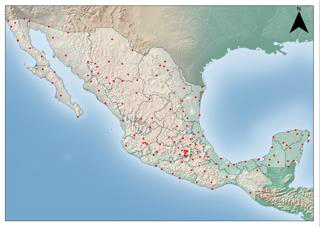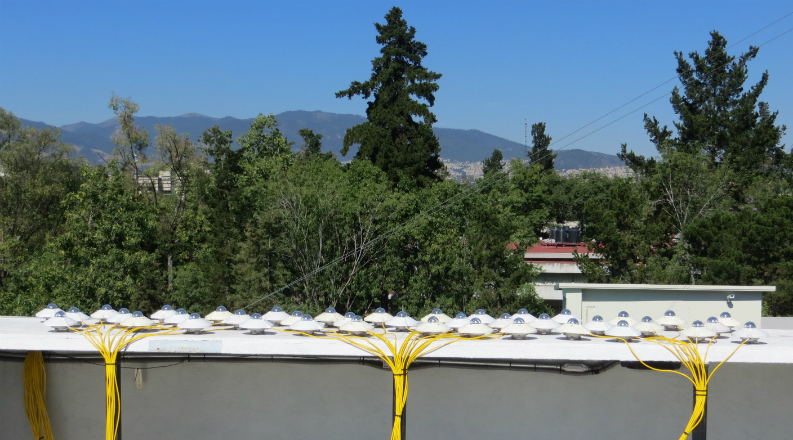Nowadays, the amount of good data necessary for analysis and prediction of climatic changes requires much more than basic data on temperature and precipitation. Solar radiation is one of the key parameters of the weather and climate which affects many processes on the Earth’s surface and in the atmosphere, and it needs to be measured in modern meteorological networks.
Solar radiation is also an important factor for many biologists and agronomists, physicists and material scientists, architects and public health professionals. All of them need precise data on solar radiation to perform their work and research. For others, the special importance of solar radiation is due to growing interest in implementing renewable energy sources.
SMN has a network of Automatic Weather Stations (AWS) which are distributed over the whole of Mexican territory. Each of the 136 weather stations includes a Kipp & Zonen CMP 11 pyranometer to measure global horizontal solar irradiance. The data from the AWS are transmitted every 10 minutes via the Geostationary Operational Environmental Satellite (GOES), operated by the National Oceanic and Atmospheric Administration (NOAA) of the USA.

In order to keep this network and its valuable data reliable, regular calibration of the sensors is essential. This is why the Secretaría de Energía de México (SENER) funded a project for calibration and maintenance of the pyranometers in the national network to ensure reliable surface measurements for the initial assessment of the solar energy resource of the country. These ground data are also used for the fine tuning of different radiative transfer models for analyzing the data derived from meteorological satellite images.
Calibration of the pyranometers is performed by the Solar Radiation Section (SRS) of the Instituto de Geofísica of the Universidad Nacional Autónoma de México (UNAM) near Mexico City. The Section has over 50 years of experience in the measurement of solar radiation and is one of the three Regional Radiation Centers of the World Meteorological Organization (WMO) for Region IV (North America, Central America and the Caribbean).
The specialists at SRS take care of the preventive and corrective maintenance and calibration of the CMP 11 pyranometers of the SMN AWS network. The calibration is performed according to the international standard ISO-9846:1993 Solar energy - Calibration of a pyranometer using a pyrheliometer. For this, SRS has a reference Eppley HF absolute cavity radiometer (ACR) that regularly participates in International Pyrheliometer Comparisons (IPC) at the World Radiation Center in Davos, Switzerland.
The calibration of the reference absolute cavity radiometer is transferred to a reference pyranometer using a SOLYS 2 sun tracker, according to the ISO-9846:1993 ‘sun-shade’ method. This method requires lengthy observations and specific environmental conditions such as clear skies and a stable atmosphere, circumstances that determine the site and season of the calibration.
The reference pyranometer is used exclusively for calibrations of the field pyranometers of the SNM network and guarantees traceability of the field pyranometer calibration to the World Radiation Reference (WRR)
Article by Ing. Víctor L. Hernández, Director de la División de Meteorología, Rossbach de México
